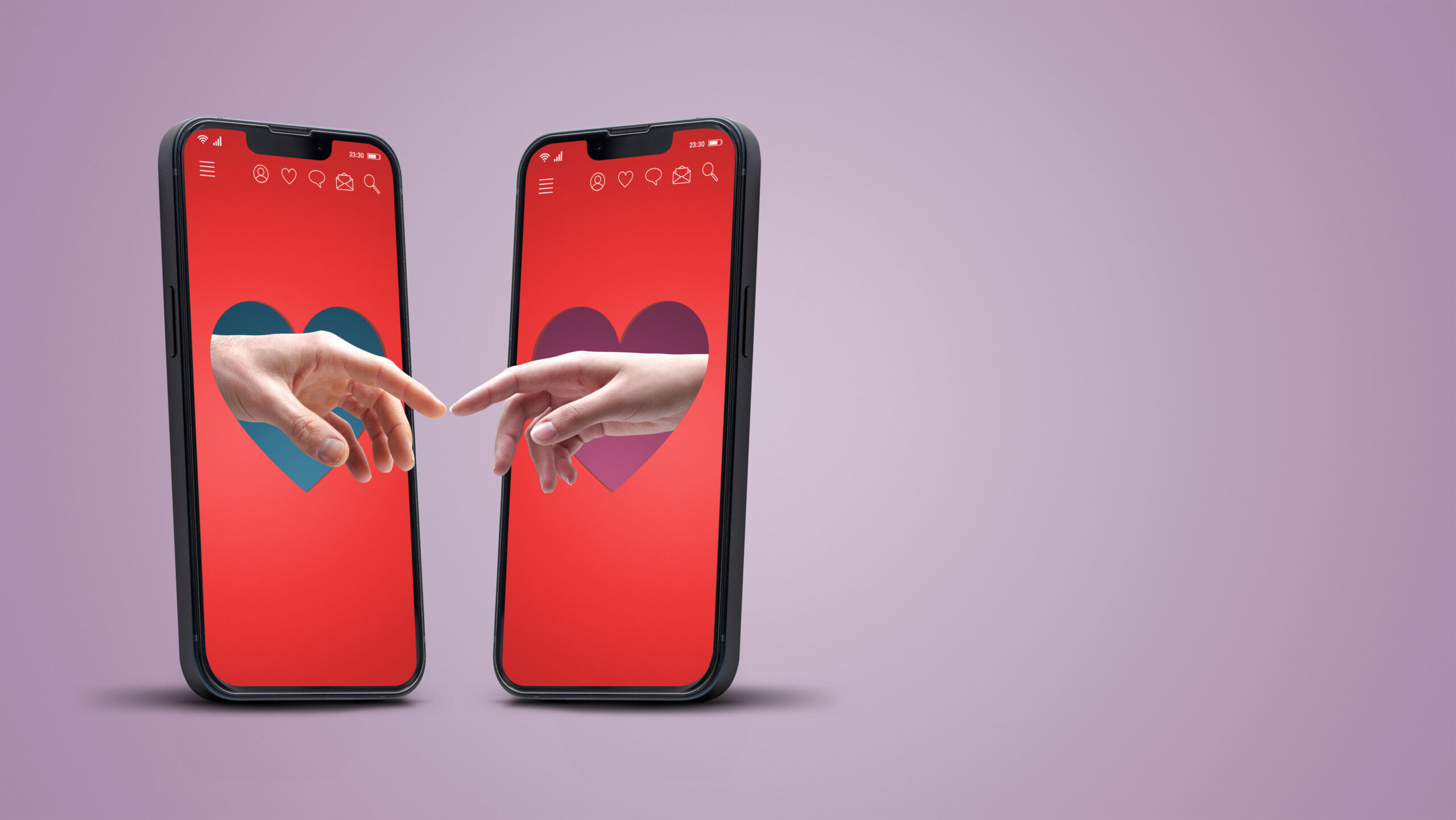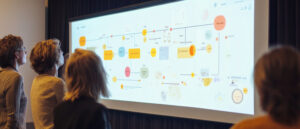What really determines your dating app matches—your preferences, your behavior, or something deeper? Are dating app matches the result of a simple swipe, or do algorithms fine-tune them based on your every move? How can understanding the science behind dating app matches help you make more meaningful connections?
In this post, we dive into the invisible engine behind your dating app matches: algorithms. These systems don’t just rely on your profile details—they analyze your swiping behavior, messaging habits, and even location patterns to suggest people you’re more likely to engage with. From rule-based filters to machine learning and predictive modeling, each dating app customizes its algorithm to deliver what it believes are your best possible matches.
We also explore the ethical and emotional implications of algorithm-driven dating app matches. Topics like bias, privacy, and filter bubbles highlight how technology can both connect and limit us. As dating platforms adopt AI and more personalized features, users are encouraged to take a more active role in shaping their experience, because ultimately, the quality of your dating app matches is as much about you as it is about the code behind the scenes.
Let’s travel back in time for a moment, let’s say, to the year 1995. Romance meant chance encounters, like a flirtatious glance at a library back then. Or, you had to rely on the people you know to set you up, like going on a blind date with a mutual friend’s roommate. Or, if all else fails, you had to get brave and shoot your shot—putting a handwritten note in someone’s locker at school or walking up to someone at a coffee shop and striking up a conversation on your lunch break.
Fast-forward to today, and one in ten couples in the U.S. traces their relationship back to a dating app.
With millions of users globally, platforms like Tinder, Bumble, Hinge, and OKCupid have revolutionized how relationships begin—and they do so through algorithms that quietly guide us to the right match.
It’s easy to assume dating apps function as a Rolodex where you browse endlessly. But that’s not how modern platforms operate. Instead, they rely on algorithmic matchmaking—a complex, iterative system designed to serve you, people who are not only potentially compatible but also likely to engage with you, answer messages, or meet up in real life. Contrary to popular belief, the people you see while scrolling through your feed aren’t totally random. Each swipe, like, and message sent feeds data to the algorithm to refine your suggested matches.
You don’t need to be a data scientist to understand how dating app matches happen. With so many people using these apps, everyone should know how these platforms operate.
Table of Contents:
Key Components of Dating App Algorithms
Types of Matching Algorithms Use
- Rule-Based Matching
- Collaborative Filtering
- Machine Learning & Predictive Modeling
- Psychometric & Compatibility Models
Ranking & Prioritization of Profiles
The Role of Engagement Metrics
Ethical & Practical Challenges
Evolving Trends in Algorithmic Matching
Key Components of Dating App Algorithms
Everything you do—or don’t do—on a dating app feeds the algorithm. Think of each action or inaction as an ingredient for a recipe, with the final product being the potential matches you see on your feed.
Let’s explore the main ingredients for these matchmaking recipes:
- User Profiles & Static Data
- Behavioral Data
- Location & Proximity
1. User Profiles & Static Data
From the moment you sign up for an account, the algorithm starts creating your “digital self,” fueled by the static data you provide, such as:
- Demographic data, including your age, gender, and sexual orientation.
- Your preferences, including your desired age range, geographic distance, and preferred gender for your potential matches.
- The interests you share, like your hobbies, favorite food, favorite movies, or your taste in music.
Moreover, the way profiles are curated also varies by platform. For example, Hinge emphasizes photos and icebreakers. Tinder has evolved beyond its swipe-based roots by incorporating features like lifestyle tags, interest badges, and prompts that let users showcase values, intentions, and identity, helping the algorithm match people on more than looks. Each platform tailors the model to suit its matchmaking philosophy. Users want the dating app matches they receive to be as spot-on for them as possible, which is why the algorithm collects all the information that it does.
2. Behavioral Data
While your static data is important and valuable, your actual activity on the app teaches the algorithm far more than just listing your preferences and interests.
- Swipes: Liking and passing build the algorithm’s sense of who you find attractive.
- Messaging: Who you message, how often, and how deeply you converse signals compatibility and interest.
- App Usage: The time spent browsing, the frequency of logins, and the session length all inform how “active” you are.
- Filters: Selecting preferences like “vegetarian” or “non-smoker” tells the system what matters to you in a match.
Each interaction is a data point. The algorithms create a personality profile based on who gets your attention and who doesn’t.
3. Location & Proximity
Dating app matches and activity may exist solely in a digital space, but geography still matters. The algorithm relies heavily on location and proximity data to give you the best possible suggestions.
The basic radius filter shows people nearby based on parameters you set, such as wanting to see profiles only within a 25-mile radius of you. Dating apps also track mobility patterns that are adjusted through dynamic algorithms. So, if you travel often, you might see long-distance options during travel seasons. Similarly, you may also see active profiles in a specific area you’re traveling to. For example, if you live in Chicago but are on vacation in Orlando for a week and are active on the app, you’ll see profiles in that region. Distance is important, but it’s not static. The system adapts to your behavior in real-time. Most dating apps use geolocation to filter matches.
Types of Matching Algorithms Use
The dating app matches you receive vary by platform, as each app uses different approaches, sometimes even using several of these strategies simultaneously. These are some of the matching algorithms commonly used by well-known dating apps:
- Rule-Based Matching
- Collaborative Filtering
- Machine Learning & Predictive Modeling
- Psychometric & Compatibility Models
1. Rule-Based Matching
This is the old-school method: filter by age, distance, or shared preferences (like no smokers or preferring someone with a pet). They’re reliable but inflexible or static, like a simple “Yes/No” matchmaking checklist.
2. Collaborative Filtering
This is our old friend from Netflix or Amazon: “Customers like you also liked…” Collaborators use co-liking, co-swiping, or shared interests to suggest people who appeal to similar users. It’s a community-driven recommendation engine built on shared behavior, much like the product and movie recommendations shown on Amazon, Netflix, and other platforms.
3. Machine Learning & Predictive Modeling
Take collaborative filtering a step further: machine learning models now analyze individual patterns. Who do you swipe right on? Do you reply more to witty, long profiles or short, emoji-driven ones? The system outputs a personalized ranking, continuously refined by your app activity.
4. Psychometric & Compatibility Models
Apps like eHarmony, OkCupid, or Coffee Meets Bagel lean into personality-focused matching: Myers-Briggs, Big Five, love languages, or even proprietary psychometric quizzes. These models attempt to predict compatibility by aligning personalities rather than just measuring engagement.
Ranking & Prioritization of Profiles
Once the dating app algorithms have all your data, both static and behavioral, they can curate a feed full of potential matches. But the algorithm’s work doesn’t stop there. It also determines the ranking and prioritization of the profiles you see, dictating the order in which other people’s profiles appear as you’re swiping.
For example, more active profiles will get priority. The algorithm takes activity as a sign of liveliness and interprets that to mean the person will be more likely to respond to messages. The algorithm also favors users with a history of good response rates and quality messages, rewarding users who engage thoughtfully on the apps with a higher priority ranking.
Some algorithms also boost newer profiles to keep the feed fresh; that way, you see a constant revolving door of profiles and not too much of the same thing or person multiple times.
Your past matches also impact your feed. If you had some good interactions or multiple matches with people who indicate hiking is one of their hobbies on their profile, the algorithm will take note of that and prioritize similar profiles.
Conversely, inactive profiles don’t get prioritized. This helps keep the feed fresh and relevant, ensuring no one gets paired up with someone who likely won’t reply as they haven’t even logged onto the app in months.
The Role of Engagement Metrics
Behind the scenes of dating app matches is a loop of measurement and adjustment. Every action users take—or don’t—is quietly tracked and used to refine the algorithm’s understanding of what makes a “successful” experience. While it might feel like serendipity when a great match appears, it’s more likely the result of millions of data points converging into a decision designed to keep users engaged.
At the core of these systems are engagement metrics—key performance indicators that shape what you see and how often your profile appears in others’ feeds. These metrics are designed to measure the “health” of your experience. They also serve the app’s business goal: keeping you active, engaged, and, ideally, satisfied enough to stick around.
Interestingly, this isn’t the case for all apps. Hinge built its brand on the idea that engagement metrics should not be infinite swiping but helping people form real relationships. Their algorithm prioritizes matches with high message reciprocity and consistent long-term chat history.
They even prompt users after a first date to rate the experience, not to intrude, but to understand what types of matches work best and iterate accordingly.
Their core metric isn’t time spent on the app, but the relationships formed.
Swipe-Match Ratio
To put it simply, algorithms reward behavior and activity. This means it may track metrics like your swipe-match conversion rate, which measures how many people you swipe right on—and how many swipe right on you in return. The algorithm sees high swipe-match conversion rates as a strong indicator of mutual interest. The app then uses that data to prioritize relevant profiles and suggest similar ones you will likely match.
However, this can have an adverse effect if your swipe-match rate is low. In those cases, your profile may show up for others less often or even to people outside your typical taste range as a way for the algorithm to “test” different compatibility pools against your profile. This can feel discouraging if you find yourself constantly swiping with few matches, so remember, the more active you are on the app, the more tailored the algorithm’s recommendations will be to you.
Message-Engagement Ratio
Not only is the algorithm looking out for the matches you get, but it’s also monitoring whether they lead to direct messages. The algorithm will track how many of your matches lead to actual conversations, and it can go even deeper than that, measuring how long a conversation lasts, who initiated the messages, and even the depth of communication, like whether it’s just a series of short replies or a more involved conversation.
This data helps the platform prioritize matches that result in real engagement. If you consistently respond, ask questions, and hold a conversation, the algorithm may reward you by ranking your profile higher in others’ queues.
It’s also why some apps now prompt users with icebreaker suggestions and reply encouragements like, “You’re 2x more likely to match if you say hi!”
Ethical & Practical Challenges
As with any app or algorithm, there are ethical and practical concerns. The challenges and concerns surrounding dating app matches and the systems that make them possible are very similar to what we see with other platforms that rely on user data to function, including:
- Bias & Fairness
- Filter Bubbles
- Privacy Concerns
1. Bias & Fairness
Do algorithms reinforce biases? It’s possible. Research hints that people of color, older adults, or larger body types receive fewer matches as the algorithm creates echo chambers of specific taste profiles, some of which inherently exclude particular groups.
2. Filter Bubbles
When you always swipe on one type of person, your feed narrows, and so does your exposure to different lifestyles, looks, and ideas. Dating app algorithms can widen intimacy and social interactions or shrink them.
3. Privacy Concerns
Dating apps hold intensely personal data. Without strong safeguards, it becomes vulnerable to abuse or leaks. Location data and psychometric details are all personal, and how these algorithms rely on that data to function can be concerning and uncomfortable for some users.
Evolving Trends in Algorithmic Matching
As AI and technology evolve, new trends are emerging in algorithmic matching that yield better dating app matches.
For example, the new dating app start-up Sitch uses AI to offer users a virtual matchmaker, helping them facilitate interactions with their match, using the AI bot as a mediator.
Dating apps could also use AI to personalize feeds, factoring in other criteria beyond swipe and match history, like time of day, to curate a personalized feed that feels aligned with the user at all times.
Some apps, like Hinge and Bumble, also encourage users to be more creative with their profiles. Users are directed to use video and audio recordings to answer prompts more authentically and make more genuine introductions with other users.
Third-party data can also be integrated, allowing users to link their Spotify, for example, to see their compatibility with someone based on their music tastes and playlists. This adds another layer to profiles to make users feel more human and allows them to assess dating app matches and compatibility with more nuance and care.
Conclusion
On the surface, dating apps seem like casual entertainment. But behind every match is a complex machine, an algorithm tuned to human behavior, social norms, and platform incentives. These systems analyze our clicks, messages, photos, and preferences, learning to predict what might attract, intrigue, or even challenge us.
These algorithms respond to what we teach them. If we engage mindlessly—swiping based on fleeting looks or defaulting to safe bios—they’ll reinforce those behaviors. If we approach with curiosity, intention, and openness, we can help train the system to deliver richer, more meaningful experiences.
The question isn’t whether dating apps can create real connections—they already have millions of times. The real question is: How do we, as users, shape the experience we want to have?
As AI becomes more central to modern matchmaking, it is tempting to imagine it will do all the hard work for us. But the best outcomes still come when humans and algorithms co-create.









3 Responses
Rattling clean web site, regards for this post.
Unquestionably believe that which you said. Your favorite justification seemed to be on the net the simplest thing to be aware of. I say to you, I certainly get annoyed while people consider worries that they plainly do not know about. You managed to hit the nail upon the top as well as defined out the whole thing without having side-effects , people could take a signal. Will likely be back to get more. Thanks
It is in reality a nice and helpful piece of info. I am satisfied that you simply shared this useful info with us. Please stay us up to date like this. Thanks for sharing.